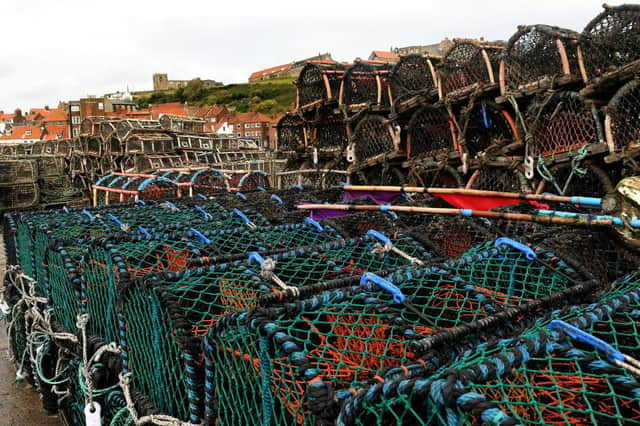Picture Post: Whitby, a stunning fishing town that reels in many visitors


The town has a maritime, mineral and tourist heritage.
Its East Cliff is home to the ruins of Whitby Abbey, where Cædmon, the earliest recognised English poet, lived.
The fishing port emerged during the Middle Ages, supporting important herring and whaling fleets, and was where Captain Cook learned seamanship.
Advertisement
Hide AdAdvertisement
Hide AdTourism started in Whitby during the Georgian period and developed with the arrival of the railway in 1839.
Its attraction as a tourist destination is enhanced by the proximity of the high ground of the North York Moors National Park and the heritage coastline and by association with the horror novel Dracula.
Jet and alum were mined locally, and Whitby jet, which was mined by the Romans and Victorians, became fashionable during the 19th century.
The earliest record of a permanent settlement is in 656, when as Streanæshealh it was the place where Oswy, the Christian king of Northumbria, founded the first abbey, under the Abbess Hilda.
Advertisement
Hide AdAdvertisement
Hide AdThe Synod of Whitby was held there in 664. In 867, the monastery was destroyed by Viking raiders. Another monastery was founded in 1078. It was in this period that the town gained its current name, Whitby (from “white settlement” in Old Norse). In the following centuries.
The abbey ruin at the top of the East Cliff is the town’s oldest and most prominent landmark.
Other significant features include the swing bridge, which crosses the River Esk and the harbour, which is sheltered by the Grade II-listed East and West piers.
St Mary’s Church was founded around 1110, although its interior dates chiefly from the late 18th century. It is situated on the East Cliff, overlooking the mouth of the River Esk, close to the ruins of Whitby Abbey.
Church Steps, a flight of 199 steps leads up the hill to the church and abbey from the streets below.
Technical details: Nikon D850 camera, 24-70mm lens, 1/125th second at f8, ISO 400.